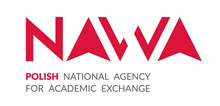100 Gbps link between Hamburg and Świerk
2017.11.28 15:37 - Marek PawłowskiLast week NCBJ and European XFEL GmbH signed a framework agreement on cooperation. The agreement specifies legal terms on which NCBJ will participate in operation of and research conducted at the XFEL free electron laser newly constructed in the Hamburg area. That most powerful in the world laser is capable to produce ultra-short pulses of X-ray radiation that can open up new perspectives in research on matter in the microscale, in particular on biological and chemical micro-systems.
As specified in an annex to the agreement, storage and processing of experimental data will be one of the major cooperation fields. Data acquired by international teams of researchers working at XFEL will be processed basically in two computer centres: the NCBJ Świerk Computer Centre (CIŚ) and the DESY Computer Centre in Hamburg. So far CIŚ has been processing some data acquired at the LHCb experiment run in CERN (Geneva). The stream of data from Hamburg is likely to be even larger, and they will probably be coming in much larger packets. That calls for some larger bandwidth link between Świerk and PIONIER, Polish optical Internet network. Therefore one of key tasks that must be accomplished to carry out the agreement will be to increase the link bandwidth. Scientists expect the bandwidth will reach 100 Gbps by the end of 2018. In subsequent years the link will be configured in some special way in order to better adopt the CIŚ infrastructure to receive packets of data from Hamburg. CIŚ experts will also participate in development of software systems dedicated for scientists working at XFEL. CIŚ computing powers will be used by physicists/chemists/biologist from all over the world, but location of the IT centre in Poland will surely facilitate work of Polish scientists conducting their experiments at XFEL.
European XFEL free electron laser has been in operation since September 1, 2017. Electrons accelerated in an 1.5 km-long tunnel enter an area of specially formed magnetic field that forces them to move along an undulatory path. Moving along such a path high-energy electrons are emitting ultrashort pulses of X-ray radiation.
NCBJ, a partner in the European XFEL GmbH company that operates the laser, contributed itself to laser development and was coordinating contributions delivered by other Polish institutions. NCBJ management has applied for funds to finance our participation also in the laser operation phase. The participation might bring not only scientific benefits but ultimately also some revenues from the delivered services.


















